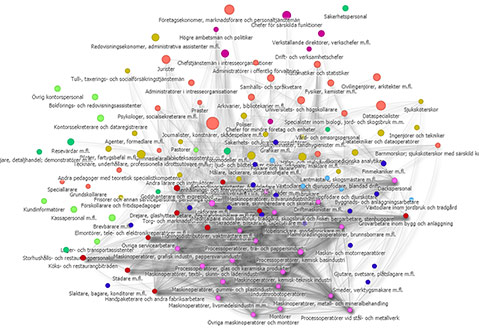If you click the link below you will find the Swedish occupational space, showing how occupations (SSYK3) are related to one another and how complex they are. This is to give an indication of where a region’s occupational specializations are located and thereby indicate potential regional development areas based on existing strengths.
We base the analysis on occupations (SSYK96) where proximity in the network is represented by how related occupations are from a skill-relatedness perspective, defined as higher than expected mobility between occupations during the period 2002-2013. This is seen as an indication that it is possible to reuse the competence in one profession to perform the tasks in another profession – they are related.
The respective size of the nodes represents how complex the profession is, based on the principle that complex professions only exist in a few regions (72 FA regions) and that they must also exist in regions with a relatively large number of professional specializations.
Click on the map to see regional variations in occupational structure. Only the occupations in which each FA region specializes, ie has a higher proportion of that occupation in the regional labor market compared with the country, are visible in each region. It is possible to compare two regions.
Click on each profession for more information on size, employees, education and sectors.

